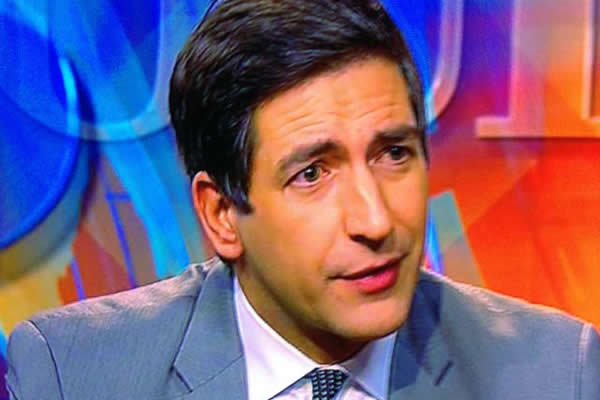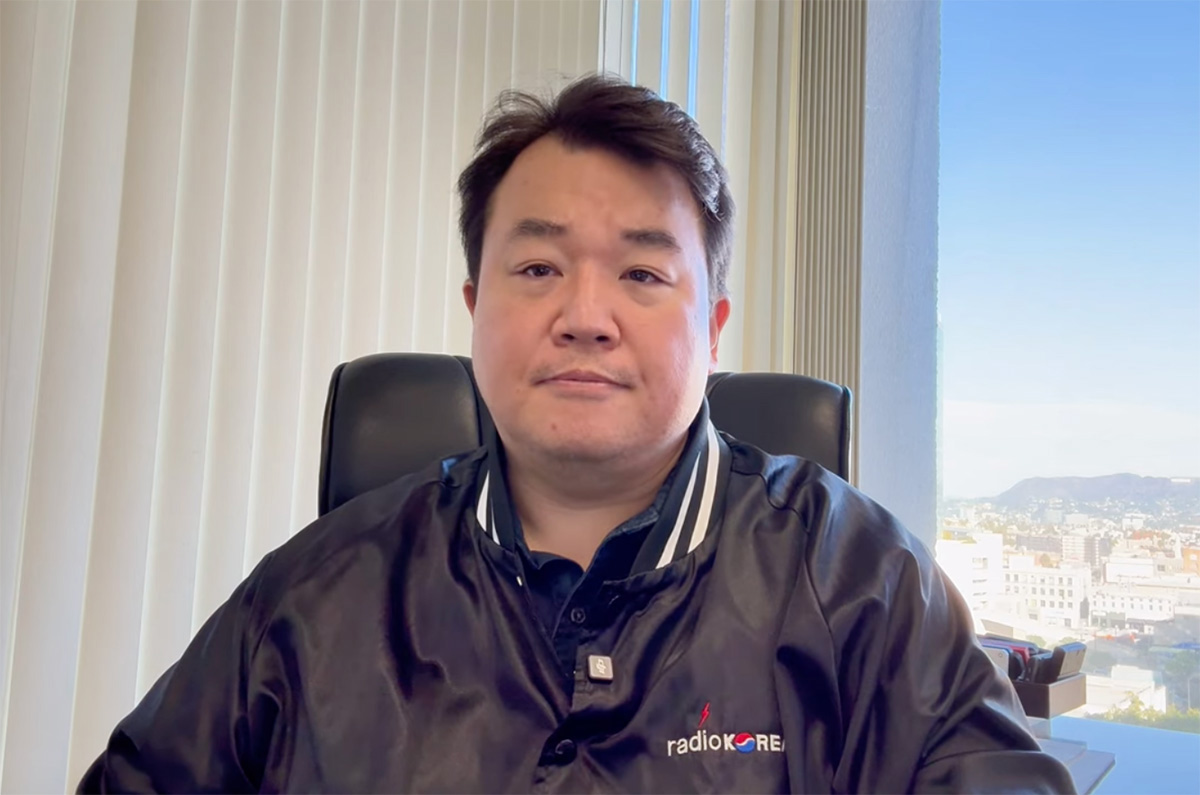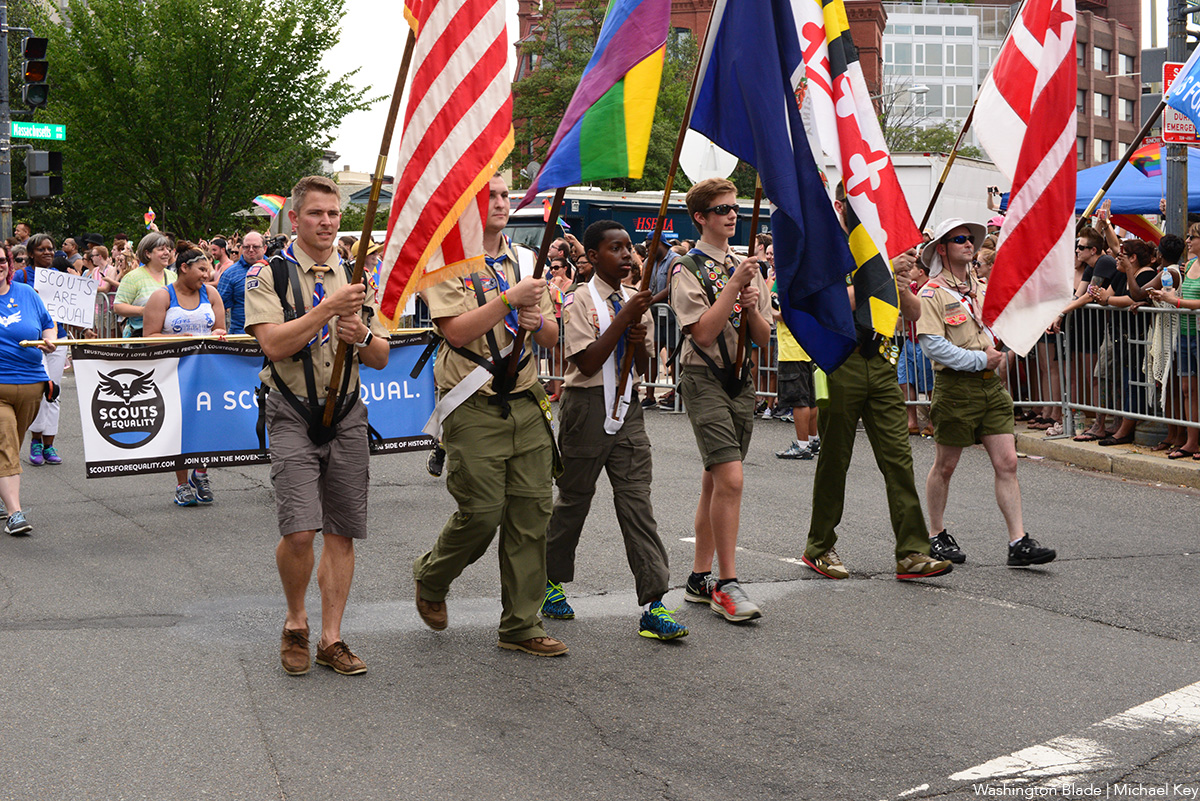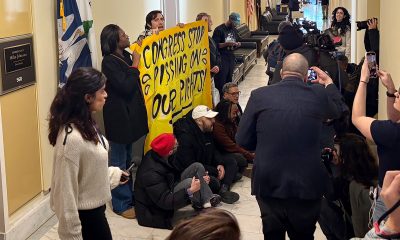National
‘Very familiar’: Mark Glaze’s story brings into focus mental health for gay men
Experts see common story as LGBTQ people enter middle age

The death by suicide at age 51 of Mark Glaze, a gun reform advocate who was close to many in D.C.’s LGBTQ community, is striking a chord with observers who see his struggles with mental health and alcoholism as reflective of issues facing many gay men as they enter middle age.
Glaze’s story resonates even though much of the attention on mental health issues in the LGBTQ community is devoted to LGBTQ youth going through the coming out process and transgender people who face disproportionate violence and discrimination within the LGBTQ community in addition to a growing focus on LGBTQ seniors entering later stages of life.
Randy Pumphrey, senior director of behavioral health for the D.C.-based Whitman-Walker Health, said Glaze’s story was “very familiar” as a tale of mental health issues facing gay men in the middle stage of life.
“You’re talking about a gay-identified man who is in his 50s, somebody who has struggled with alcohol misuse — or maybe abuse or dependence— and also depression,” Pumphrey said. “I think that there has always been a higher incidence of suicide for men in general in their middle age 50 and above, but this increases when you’re talking about gay men, and also if you’re talking about gay men who suffer with mental health issues, or substance use disorder issues.”
Several sources close to Glaze said his death did not come as a surprise. His family has been open about his death by suicide last month while he was in jail after allegedly fleeing the scene of a car accident in Pennsylvania and a long history of depression and alcoholism.
Pumphrey said Glaze’s situation coping with mental health issues as well as the consequences for his role in the accident, were reflective of someone who might “begin to perceive that this is an issue that they can’t get away from, or the consequences they can’t get away from exposure and that can lead somebody to a fatal outcome.”
“My experience is that there have been gay men that I have worked with over the years — particularly in their 50s and early 60s — it’s taken them a long time to recognize the severity of the problem, whether it’s their depression or their substance abuse, and then they find themselves in a very precarious situation because of shame, and so they may not necessarily seek help even though they need help.”
A 2017 study in the American Journal of Men’s Health found the prevalence of depression among gay men is three times higher than the general adult population, which means they are a subgroup at high risk for suicide.
The study found “scant research exists about gay men’s health beyond sexual health issues,” most often with HIV, which means issues related to depression and suicidality “are poorly understood.”
“Gay men’s health has often been defined by sexual practices, and poorly understood are the intersections of gay men’s physical and mental health with social determinants of health including ethnicity, locale, education level and socioeconomic status,” the study says.
The study acknowledged being male itself is one factor incorporated in addressing mental health issues in this subgroup because “regardless of sexual orientation, men can be reluctant to seek help for mental health problems.” Another study quoted in the report found 23 percent, less than one quarter of gay men, who attempted suicide sought mental health or medical treatment.
In addition to mental health issues facing gay men in Glaze’s age group, others saw his situation as a common story in the culture of Washington, which is notorious for celebrating and prioritizing success with little tolerance for personal setbacks.
In the case of Glaze, who had sparred on Fox News with Tucker Carlson as executive director of Everytown for Gun Safety, the threat of exposure and threat to his career may have seemed overwhelmingly daunting.
Steven Fisher, who knew Glaze since the 1990s and worked with him at the D.C.-based Raben Group, said one factor that contributed to Glaze’s condition was “he could only see upward in terms of his career trajectory.”
“We saw that in him and it had me very concerned because I felt like he might end up in a place that wasn’t good once he left Everytown, and that’s tragically and sadly what happened,” Fisher said. “I think he just had trouble adjusting to what is usually a roller coaster ride, I think, in people’s careers, especially in the D.C. world.”
Along with Glaze, Fisher has worked on gun issues for Everytown, which has been a client of his since 2015 after he worked for them in 2012 after the Newtown shooting.
Compounding the challenges that Glaze faced is a culture among many gay men focused on sexuality, which prioritizes youth and appearance and presents problems as those qualities start fading when men enter middle age.
Fisher said another factor in Glaze’s condition was social media, pointing out public perception about his identity was important to him.
“If you look at his social media — I think this is instructive to the rest of us — a lot of the comments are about how Mark was so good looking and he was charming, and he was so smart and so funny,” Fisher said. “That’s all true, and that’s why he was very appealing to many people, but those qualities don’t really tell you everything about a person. In fact, one could argue they’re superficial in a way, and people have to remember people are more complicated than what you see on social media.”
One issue for gay men facing mental health issues as they enter middle age is they don’t have the same resources as those available to LGBTQ youth, who have been more of a focus in terms of mental health issues in the LGBTQ community.
Among the leading organizations for LGBTQ youth is the Trevor Project, which has resources and a hotline for LGBTQ youth facing mental health crises.
Kevin Wong, vice president of communications for the Trevor Project, said his organization would be receptive to an older LGBTQ person who calls the hotline, but ultimately would refer that person elsewhere.
“If an LGBTQ person above the age of 25 reaches out to The Trevor Project’s crisis services for support and expresses suicidal thoughts, our counselors will listen, actively and with empathy, and work with them to de-escalate and form a safety plan, like any other contact,” Wong said. “However, our organization has remained youth-centric since its founding and our volunteer crisis counselors are specifically trained with younger LGBTQ people in mind.”
Much attention is focused on the coming out process for LGBTQ people, a time that can upend close relationships — as well as reaffirm them — and a process more commonly associated with youth.
Ilan Meyer, senior scholar of public policy at the Williams Institute at the University of California, Los Angeles, said data is scant about suicide rates among LGBTQ people, but information on suicide attempts shows they tend to be at a heightened rate for LGBTQ people as they go through the coming out process.
“What we do know is that there is a connection with the coming out period at whatever age coming out happens,” Meyer said. “And so, we see a proximity to coming out whatever age that happened, we see the suicide attempts proceeding and after that.”
Suicide attempts, Meyer said, are much higher for LGBTQ people than the population at large. The self-reported rate of suicide attempts in the U.S. population as a whole, Meyer said, is 2.4 percent, but that figure changes to 20 to 30 percent among LGBTQ youth, which about to 10 to 15 times greater.
Black and Latino people, Meyer said, have been less likely to make suicide attempts in their lifetimes, although he added that may be changing in recent years.
With the primary focus on mental health issues elsewhere in the LGBTQ community, Glaze’s death raises questions about whether sufficient resources are available to people in his demographic, or whether individuals are willing to seek out care options that are available.
Meyer said whether the resources for suicidal ideologies among LGBTQ people are sufficient and what more could be done “is the the million-dollar question.”
“It’s definitely not determined by just mental health,” Meyer said. “So many people have depression, but they don’t attempt suicide. And so, then the difficult thing is to find the right moment to intervene and what that intervention should be.”
Meyer said much of the focus on mental health is on a person’s last moments before making a suicide attempt, such as making suicide hotlines readily available, but some of the stressors he sees “are more chronic, ongoing things related to homophobia and the kind of experience that LGBT people have as they come to terms to realize their sexual identity.”
Pumphrey said another factor in mental health issues not to be underestimated for almost two years now is “dealing with the COVID and loneliness epidemic,” which appears to have no immediate end in sight with the emergence of the Omnicron variant.
“There was always this piece of sometimes the experience of being in your 50s and early 60s…we talk about the invisibility factor,” Pumphrey said. “But when there’s just this sense of being disconnected from community, especially in the early days of the pandemic, and kind of being locked down, I think that just raised the risk.”
California
LGBTQ community calls out Radio Korea over host’s homophobic comments
Station acknowledged controversy, but skirted accountability

On Monday, Nov. 3, Radio Korea aired its regular morning talk show program, where one of its hosts, Julie An, discussed her lack of support for the LGBTQ community, citing her religious beliefs. She also went on to comment that gay people spread HIV and AIDS, and that conversation therapy — which has been linked to PTSD, suicidality, and depression — is a viable practice. Clips of this have since been taken down.
Radio Korea offers Korean language programming to engage local Korean American and Korean immigrant community members. Its reach is broad, as Los Angeles is home to the largest Korean population in the U.S, with over 300,000 residents. As An’s words echoed through the station’s airwaves, queer Korean community members took to social media to voice their concern, hurt, and anger.
In a now-deleted Instagram post, attorney, activist, and former congressional candidate David Yung Ho Kim demanded accountability from the station. Writer and entertainer Nathan Ramos-Park made videos calling out Radio Korea and An, stating that her comments “embolden” people with misinformation, which has the ability to perpetuate “violence against queer people.”
Community health professional Gavin Kwon also worries about how comments like An’s increase stigma within the Korean immigrant community, which could lead to increased discrimination against queer people and their willingness to seek health care.
Kwon, who works at a local clinic in Koreatown, told the Los Angeles Blade that comments like An’s prescribe being gay or queer as a “moral failure,” and that this commonly-held belief within the Korean immigrant community, particularly in older generations, strengthens the reticence and avoidance clients hold onto when asked about their gender or sexual orientation.
“When you stigmatize a group, people don’t avoid the disease — they avoid care,” Kwon explained. “They avoid getting tested, avoid disclosing their status, and avoid talking openly with providers. Stigma pushes people into silence, and silence is the worst possible environment for managing any infectious disease.”
For weeks, Radio Korea did not offer a direct response to the public criticism. Its Instagram feed continued to be updated with shorts, featuring clips of its various hosts — including An.
On Friday, Radio Korea CEO Michael Kim released an official statement on the station’s YouTube page. In this video, Michael Kim stated that An’s comments “included factual inaccuracies” and that the station “does not endorse or share the personal opinions expressed by individual hosts.” Michael Kim also stated that Radio Korea “welcomes members of the LGBT community to share their perspectives” in order to deepen understanding through dialogue.
Afterwards, Michael Kim continued that though he acknowledges the “pain” felt by queer community members, he concluded: “I don’t think Radio Korea needs to apologize for what was said any more than Netflix should apologize for what Dave Chappelle says, or any more than Instagram or TikTok should apologize for what people say on their platforms.”
Michael then offered a justification that An’s statements were “not part of a news report,” and that he was “disappointed” that David Yung Ho Kim, specifically, had been vocal about An’s comments. Michael Kim stated that he was the first person to interview David Yung Ho Kim in 2020 during his congressional campaign, and that he had provided the candidate a platform and opportunity to educate listeners about politics.
“After all these years, the support Radio Korea has given him,” said Kim, “the support I personally gave him, even the support from other Radio Korea members who donated or even volunteered for him — he dishonestly tried to portray Radio Korea as being an anti-gay organization.”
Michael Kim went on to criticize David Yung Ho Kim’s purported “hurry to condemn others,” and also questioned if David has disowned his father, who he states is a pastor. “What kind of person is David Kim, and is this the kind of person we want in Congress?” Michael Kim asked viewers, noting that Koreatown is “only about three miles from Hollywood, and some people just like to perform.”
At the end of the video, Michael Kim stated that his duty is to guard the legacy of the station. “My responsibility is to protect what was built before me and ensure that Radio Korea continues serving this community long after today’s momentary controversies disappear,” he said.
For community members and advocates, this response was unsatisfactory. “The overall tone of the statement felt more defensive than accountable,” Kwon wrote to the Blade. “Instead of a sincere apology to the LGBTQ+ community that was harmed, the message shifts into personal grievances, political dynamics, and side explanations that don’t belong in an official response.”
Michael Kim’s portrayal of the criticism and calls to action by community members as a “momentary controversy” paints a clearer picture of the station’s stance — that the hurt felt and expressed by its queer community members is something that will simply pass until it is forgotten. An continues to be platformed at Radio Korea, and was posted on the station’s social media channels as recently as yesterday. The station has not outlined any other action since Michael Kim’s statement.
U.S. Military/Pentagon
Pentagon moves to break with Boy Scouts over LGBTQ and gender inclusion
Leaked memo shows Hegseth rejecting Scouting America’s shift toward broader inclusion

The Pentagon is preparing to sever its longstanding partnership with the Boy Scouts of America, now known as Scouting America.
In a draft memo to Congress obtained by NPR, Defense Secretary Pete Hegseth criticizes the organization for being “genderless” and for promoting diversity, equity, and inclusion.
“The organization once endorsed by President Theodore Roosevelt no longer supports the future of American boys,” Hegseth wrote, according to Defense Department sources.
Girls have been eligible to join Cub Scouts (grades K–5) since 2018, and since 2019 they have been able to join Scouts BSA troops and earn the organization’s highest rank of Eagle Scout.
A statement on the Scouting America website says the shift toward including girls stemmed from “an expanding demand to join the Boy Scouts” and a commitment to inclusivity. “Throughout the late 20th and early 21st centuries, it has undergone significant changes to become more inclusive of the adult staff and volunteers that drive its programming as well as of scouts and their families,” the organization says.
Part of that broader push included lifting its ban on openly gay members in 2014 and on openly gay adult leaders in 2015.
Once the Pentagon finalizes the break, the U.S. military will no longer provide medical and logistical support to the National Jamboree, the massive annual gathering of scouts in West Virginia that typically draws about 20,000 participants. The memo also states that the military will no longer allow scout troops to meet on U.S. or overseas installations, where many bases host active scout programs.
Hegseth’s memo outlines several justifications for the decision, arguing that Scouting America has strayed from its original mission to “cultivate masculine values” by fostering “gender confusion.” It also cites global conflicts and tightening defense budgets, claiming that deploying troops, doctors and vehicles to a 10-day youth event would “harm national security” by diverting resources from border operations and homeland defense.
“Scouting America has undergone a significant transformation,” the memo states. “It is no longer a meritocracy which holds its members accountable to meet high standards.”
The Pentagon declined NPR’s request for comment. A “War Department official” told the outlet that the memo was a “leaked document that we cannot authenticate and that may be pre-decisional.”
The leaked memo comes roughly one month after nearly every major journalism organization walked out of the Pentagon in protest of new rules requiring reporters to publish only “official” documents released by the department — effectively banning the use of leaked or unpublished materials.
President Donald Trump, who serves as the honorary head of Scouting America by virtue of his office, praised the Jamboree audience during his 2017 visit to West Virginia. “The United States has no better citizens than its Boy Scouts. No better,” he said, noting that 10 members of his Cabinet were former Scouts.
Hegseth was never a scout. He has said he grew up in a church-based youth group focused on memorizing Bible verses. As a Fox News host last year, he criticized the Scouts for changing their name and admitting girls.
“The Boy Scouts has been cratering itself for quite some time,” Hegseth said. “This is an institution the left didn’t control. They didn’t want to improve it. They wanted to destroy it or dilute it into something that stood for nothing.”
NBC News first reported in April that the Pentagon was considering ending the partnership, citing sources familiar with the discussions. In a statement to NBC at the time, Pentagon spokesman Sean Parnell said, “Secretary Hegseth and his Public Affairs team thoroughly review partnerships and engagements to ensure they align with the President’s agenda and advance our mission.”
The Scouting America organization has has long played a role in military recruiting. According to numbers provided by Scouting America, many as 20 percent of cadets and midshipmen at the various service academies are Eagle Scouts. Enlistees who have earned the Eagle rank also receive advanced entry-level rank and higher pay — a practice that would end under the proposed changes.
The White House
Trans workers take White House to court over bathroom policy
Federal lawsuit filed Thursday

Democracy Forward and the American Civil Liberties Union, two organizations focused on protecting Americans’ constitutional rights, filed a class-action lawsuit Thursday in federal court challenging the Trump-Vance administration’s bathroom ban policies.
The lawsuit, filed on behalf of LeAnne Withrow, a civilian employee of the Illinois National Guard, challenges the administration’s policy prohibiting transgender and intersex federal employees from using restrooms aligned with their gender. The policy claims that allowing trans people in bathrooms would “deprive [women assigned female at birth] of their dignity, safety, and well-being.”
The lawsuit responds to the executive order titled “Defending Women from Gender Ideology Extremism and Restoring Biological Truth to the Federal Government,” signed by President Donald Trump on his first day in office. It alleges that the order and its implementation violate Title VII of the Civil Rights Act of 1964, which prohibits sex discrimination in employment. In 2020, the U.S. Supreme Court ruled 6-3 that Title VII protects trans workers from discrimination based on sex.
Since its issuance, the executive order has faced widespread backlash from constitutional rights and LGBTQ advocacy groups for discriminating against trans and intersex people.
The lawsuit asserts that Withrow, along with numerous other trans and intersex federal employees, is forced to choose between performing her duties and being allowed to use the restroom safely.
“There is no credible evidence that allowing transgender people access to restrooms aligning with their gender identity jeopardizes the safety or privacy of non-transgender users,” the lawsuit states, directly challenging claims of safety risks.
Withrow detailed the daily impact of the policy in her statement included in the lawsuit.
“I want to help soldiers, families, veterans — and then I want to go home at the end of the day. At some point in between, I will probably need to use the bathroom,” she said.
The filing notes that Withrow takes extreme measures to avoid using the restroom, which the Cleveland Clinic reports most people need to use anywhere from 1–15 times per day depending on hydration.
“Ms. Withrow almost never eats breakfast, rarely eats lunch, and drinks less than the equivalent of one 17 oz. bottle of water at work on most days.”
In addition to withholding food and water, the policy subjects her to ongoing stress and fear:
“Ms. Withrow would feel unsafe, humiliated, and degraded using a men’s restroom … Individuals seeing her enter the men’s restroom might try to prevent her from doing so or physically harm her,” the lawsuit states. “The actions of defendants have caused Ms. Withrow to suffer physical and emotional distress and have limited her ability to effectively perform her job.”
“No one should have to choose between their career in service and their own dignity,” Withrow added. “I bring respect and honor to the work I do to support military families, and I hope the court will restore dignity to transgender people like me who serve this country every day.”
Withrow is a lead Military and Family Readiness Specialist and civilian employee of the Illinois National Guard. Previously, she served as a staff sergeant and has received multiple commendations, including the Illinois National Guard Abraham Lincoln Medal of Freedom.
The lawsuit cites the American Medical Association, the largest national association of physicians, which has stated that policies excluding trans individuals from facilities consistent with their gender identity have harmful effects on health, safety, and well-being.
“Policies excluding transgender individuals from facilities consistent with their gender identity have detrimental effects on the health, safety and well-being of those individuals,” the lawsuit states on page 32.
Advocates have condemned the policy since its signing in January and continue to push back against the administration. Leaders from ACLU-D.C., ACLU of Illinois, and Democracy Forward all provided comments on the lawsuit and the ongoing fight for trans rights.
“We cannot let the Trump administration target transgender people in the federal government or in public life,” said ACLU-D.C. Senior Staff Attorney Michael Perloff. “An executive order micromanaging which bathroom civil servants use is discrimination, plain and simple, and must be stopped.”
“It is absurd that in her home state of Illinois, LeAnne can use any other restroom consistent with her gender — other than the ones controlled by the federal government,” said Michelle Garcia, deputy legal director at the ACLU of Illinois. “The Trump administration’s reckless policies are discriminatory and must be reversed.”
“This policy is hateful bigotry aimed at denying hardworking federal employees their basic dignity simply because they are transgender,” said Kaitlyn Golden, senior counsel at Democracy Forward. “It is only because of brave individuals like LeAnne that we can push back against this injustice. Democracy Forward is honored to work with our partners in this case and is eager to defeat this insidious effort to discriminate against transgender federal workers.”
-

 The White House5 days ago
The White House5 days agoTrans workers take White House to court over bathroom policy
-

 Opinions5 days ago
Opinions5 days agoEverything is Everything
-

 Congress4 days ago
Congress4 days agoMTG resigns after years of anti-LGBTQ attacks amid Trump feud
-

 U.S. Military/Pentagon5 days ago
U.S. Military/Pentagon5 days agoCoast Guard’s redefinition of hate symbols raises safety concerns for service members



















